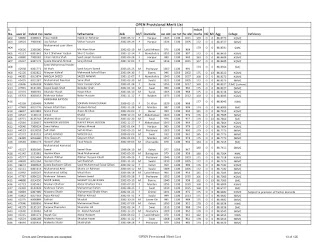CHAPTER NO.6 SOLIDS
CHAPTER
NO.6 SOLIDS
1.
|
Which
type of motion are present in solids
a.
Translational
b.
Rotational
c.
Vibrational
d.
All of these
|
C
|
2.
|
The
property of solids responsible for their rigid and definite shape is their ….
a.
High density
b.
Strong intermolecular forces
c.
Anisotropy
d.
Low rate of diffusion
|
B
|
3.
|
Solid
particles do not diffuse into each other, it is due to
a.
Little empty space
b.
Lack of translator motion
c.
No intermolecular forces
d.
sNon of these
|
A
|
4.
|
Amorphous
means
a.
Without any specific shape
b.
Without any faces
Without
translational temperature
Without
motions
|
A
|
5.
|
A
cubic crystal has … center of symmetry
a.
1
b.
2
c.
3
d.
4
|
A
|
6.
|
A
crystal conducts heat and electricity with different magnitude in different
direction. This property of crystal is called
a.
Allotropy
b.
Anisotropy
c.
Isotropy
d.
polymorphism
|
B
|
7.
|
The
geometry of NaCl is ……
a.
simple cubic
b.
body center cubic
c.
face center cubic
d.
hexagonal
|
C
|
8.
|
which
one of the following have low melting a. a. point
a.
ionic crystal
b.
covalent crystal
c.
metallic crystal
d.
molecular crystal
|
D
|
9.
|
which
one of the following is used for the treatment of goiter
a.
solid iodine
b.
table salt
cane
sugar
all
of these
|
A
|
10.
|
which
one of the following is not amorphous solid
a.
glass
b.
plastic
rubber
non
of these
|
D
|
11.
|
which
one of the following is not crystalline solid
a.
NaCl
b.
CaCO3
c.
CaO
d.
gemstone
|
D
|
12.
|
which
one of the following has more than value of one
a.
plane of symmetry
b.
axis of symmetry
c.
center of symmetry
d.
both a and b
|
D
|
13.
|
….%
urea in the solution, as an impurity, compels it to grow in one dimension
a.
10
b.
20
c.
30
d.
40
|
A
|
14.
|
Anisotropy
refers to not same transfer of
a.
Thermal conductivity
b.
Coefficient of thermal expansion
c.
Heat transfer
d.
All of these
|
D
|
15.
|
The
structure of NaCl and MgO is
a.
Cubic
b.
Rhombohedral
c.
Hexagonal
c. Non of these
d.
molecular crystal
|
A
|
16.
|
The
structure of KNO3 and NaNO3 is
a.
Cubic
b.
Rhombohedral
c.
Hexagonal
d.
Non of these
|
B
|
17.
|
The
structure of ZnO and CdS is
a.
Cubic
b.
Rhombohedral
c.
Hexagonal
d.
Non of these
|
C
|
18.
|
The
structure of KNO3 and CaCO3 is
a.
Cubic
b.
Rhombohedral
c.
Hexagonal
d.
Non of these
|
B
|
19.
|
For
isomorph
a.
Same physical properties
b.
Same chemical properties
c.
Different physical and chemical properties
d.
Same chemical but different physical properties
|
C
|
20.
|
For
polymorphs
a.
Same physical properties
b.
Same chemical properties
c.
Different physical and chemical properties
|
D
|
21.
|
Same
chemical but different physical properties
The
crystalline form of KNO3 is
a.
Rhombohedral and orthorhombic
b.
Triognal and orhtohombic
c.
Rhombohedral
d.
Trignol only
|
A
|
22.
|
The
crystalline form of CaCO3 is
a.
Rhombohedral and orthorhombic
b.
Triognal and orthorhombic
c.
Rhombohedral
d.
Trignol only
|
B
|
23.
|
There
are three allotropic form of
a.
Sulphur
b.
Tin
c.Oxygen
d.
carbon
|
D
|
24.
|
the
transition temperature for KNO3 is
a.
95.5 0C
b.
13.2 0C
c.
128.5 0C
d.
50 0C
|
C
|
25.
|
Which
one of the following is ductile and malleable
a. ionic crystal
b.
covalent crystal
c.
metallic crystal
|
C
|








Comments
Post a Comment